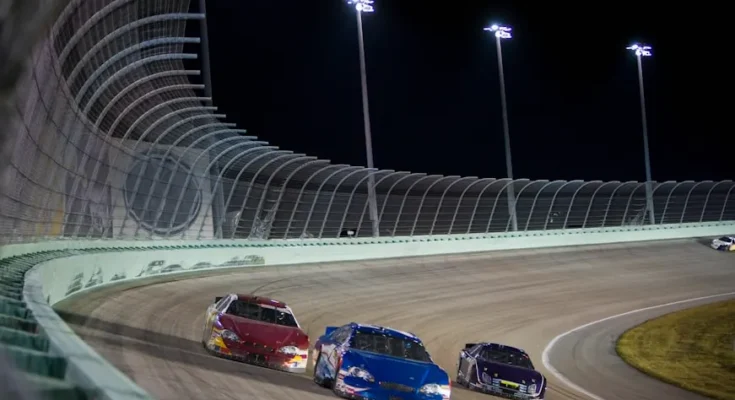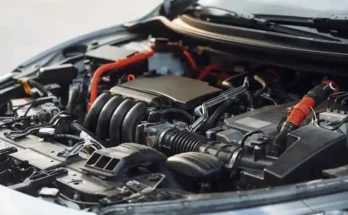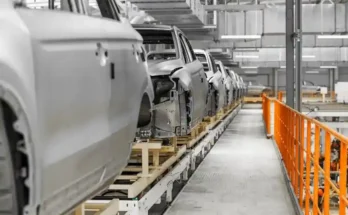The Automobile’s Everlasting Journey:
The automobile began as little more than a mechanical curiosity—noisy, temperamental, and limited. But over time, it transformed into one of the most important inventions of modern civilization. It changed how we lived, worked, and dreamed. The car wasn’t just a machine; it was a symbol of freedom, ambition, and identity.
What began as a luxury for the few quickly became a necessity for the many. Roads were built, industries were born, and entire cities expanded around the rhythm of the car. Today, the automobile is more than transportation—it’s a part of our culture, deeply woven into the fabric of daily life.
It’s easy to think of cars simply as metal, rubber, and fuel. But every vehicle represents a symphony of engineering, design, and human intent. From the roar of a muscle car to the silence of an electric vehicle, automobiles express emotion. They tell stories—of invention, competition, luxury, and accessibility.
In their mirrors, we see history. On their dashboards, we glimpse the future.
The Evolution of Engineering:
-
From Combustion to Clean Energy
The internal combustion engine ruled the 20th century. Its rumble powered revolutions—from the Model T to the Lamborghini. But the 21st century has demanded change. Climate concerns, fuel scarcity, and urban congestion have pushed engineers to think differently.
Enter electric vehicles. Once considered science fiction, EVs are now a reality. Companies like Tesla, Rivian, and Lucid are proving that zero-emission cars can be thrilling, efficient, and desirable. Hybrid technology serves as a bridge, combining the best of both worlds while infrastructure catches up.
The future may even belong to hydrogen or solar-powered vehicles—but one thing is certain: the era of sustainable mobility is no longer a dream.
-
The Brain Behind the Wheel
Today’s vehicles are rolling computers. Modern cars come equipped with hundreds of sensors, processors, and algorithms. From adaptive cruise control to automated emergency braking, technology is becoming the real driver.
Artificial intelligence is redefining how we interact with our cars. Voice commands, real-time navigation, predictive maintenance alerts—our vehicles are becoming smarter, safer, and more responsive with every update. Self-driving technology, while still in development, offers a tantalizing glimpse of what’s next.
Cars aren’t just evolving mechanically; they’re growing intelligent. And we’re only beginning to understand the implications.
Design That Moves the Soul:
-
Where Aesthetics Meet Aerodynamics
Car design has always been about more than appearance. While a sleek silhouette may turn heads, every curve and contour serves a purpose. Aerodynamics, weight distribution, safety—all of these factors are shaped by design decisions.
Classic cars have lines that make hearts race. Think of the Jaguar E-Type, the Ford Mustang, or the Porsche 911. These weren’t just vehicles; they were works of art. Today’s designers walk a fine line between preserving beauty and meeting the demands of efficiency, regulation, and technology.
Even in a world of electric motors and digital dashboards, the emotional connection to a vehicle begins with how it looks and feels. Design, more than ever, is the language of innovation.
-
Interior Innovation and the Rise of Comfort Tech
Step inside a car from 1980 and compare it to a vehicle from today—it’s like entering another world. Interiors have become sanctuaries of comfort and technology. Heated and ventilated seats, panoramic sunroofs, ambient lighting, and customizable interfaces have elevated driving into an experience rather than a chore.
Touchscreens have replaced buttons. Voice assistants replace knobs. Climate control can now learn your preferences and adjust before you even ask. The modern automobile interior is built not just to move you from point A to point B, but to make the journey feel personal and premium.
Cars as Symbols of Identity:
-
The Car Says Something
For many, a car is more than a tool—it’s an extension of personality. A rugged SUV may signal adventure. A luxury sedan exudes professionalism. A compact electric hatchback whispers eco-consciousness. Vehicles are statements on wheels.
Throughout history, certain cars became cultural icons. The Volkswagen Beetle, for instance, was once a symbol of counterculture. The Jeep Wrangler, a nod to rugged independence. The Cadillac Escalade? Urban opulence. Whether for work, status, or play, the automobile has always served as a mirror reflecting who we are—or who we aspire to be.
-
Racing, Road Trips, and the Romance of the Road
There’s something innately human about the thrill of speed, the freedom of the open road, and the desire to explore. Racing has turned drivers into legends—Ayrton Senna, Michael Schumacher, Lewis Hamilton—and vehicles into gods of asphalt.
Road trips have inspired novels, songs, and movies. From Kerouac to Pixar, the road has always symbolized possibility. Even with rising fuel prices and stricter regulations, that romance endures. Because driving isn’t just about motion—it’s about emotion.
Challenges on the Road Ahead:
-
The Push for Sustainability
While vehicles have become more efficient, the automobile industry still faces major environmental challenges. Emissions, battery disposal, manufacturing waste—these issues demand bold solutions. Car manufacturers are now investing in circular economies, where materials are recycled, reused, and reinvented.
Governments are offering incentives for EV adoption while tightening restrictions on fossil-fuel-powered cars. The race to net zero is not just political—it’s existential. Automakers are being held to higher standards, and the industry must innovate to survive.
-
Autonomous Vehicles and Ethical Dilemmas
Self-driving cars promise to eliminate human error—the cause of most accidents. But with autonomy comes complexity. How does a vehicle make split-second moral decisions? Who’s liable in a crash—the software developer, the owner, or the manufacturer?
These questions aren’t theoretical anymore. They’re being debated in boardrooms, courtrooms, and classrooms. As cars gain more autonomy, society must grapple with the philosophical and legal implications. Trust, transparency, and ethical programming are now as important as speed and horsepower.
The Future of Driving:
-
From Ownership to Access
The traditional model of car ownership is evolving. Urbanization, rising costs, and environmental awareness are shifting preferences. Car-sharing, ride-hailing, and subscription-based services are redefining what it means to “own” a car.
Why buy when you can access a fleet tailored to your needs? Need a truck today and a sports car tomorrow? With mobility-as-a-service, it’s possible. This shift challenges automakers to rethink their roles—not just as builders of cars, but as providers of experiences.
-
Smart Cities and Connected Vehicles
As cities grow smarter, so too must our vehicles. Cars will soon communicate with infrastructure—traffic lights, parking systems, even other cars—to optimize traffic flow, reduce accidents, and improve urban life.
Imagine a city where your car finds parking on its own or reroutes based on real-time air quality data. This isn’t fantasy—it’s the emerging reality of intelligent transportation systems, powered by data and connectivity.
Conclusion:
The automobile is one of humanity’s most enduring innovations. It’s more than a machine—it’s a movement. From revolutionizing economies to redefining freedom, cars have carried us through the 20th century and into a rapidly changing future.
What lies ahead may not resemble what’s in our rearview mirror. But one thing is clear: as long as there are roads to travel and dreams to chase, the spirit of the automobile will endure—evolving, adapting, and always driving us forward.




